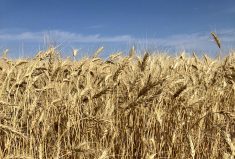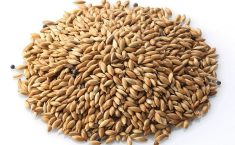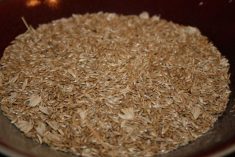CNS Canada –– The visible supply-and-demand fundamentals for canaryseed in Western Canada may appear tight — but actual price activity may say otherwise.
Canada’s 2014 canaryseed crop was estimated at 138,800 tonnes by Statistics Canada in its October report, which compares with the 131,000 tonnes grown in 2013.
The government agency has not released recent ending stocks estimates for the crop, as reported exports of 164,000 tonnes during the 2013-14 marketing year would have left the country with a negative carry-out if using the official numbers.
Actual carryout of unreported canaryseed in Western Canada was likely closer to 75,000 tonnes, said David Nobbs of Canpulse Foods at Kindersley, Sask.
Read Also

U.S. grains: Soy futures post biggest monthly gain in nearly five years on China trade optimism
U.S. soybean futures climbed to a 15-month high and posted their biggest monthly gain in nearly five years on Friday following a rally fueled by the prospect of revived exports to China.
Nobbs, the current chair of the Canaryseed Development Commission of Saskatchewan, estimated Canada has already exported 60,000 tonnes of canaryseed during the current crop year as of the end of November.
That business has helped bids improve from 24 cents per pound at harvest time, to current levels near 26 cents, he said. However, if nearly half of Canada’s total canaryseed supply had really been exported already, prices would be stronger still.
Nobbs noted at least 25,000 tonnes of the exports conducted to date consisted of old-crop supplies that moved before any new crop was even available.
“Those stocks were not supposed to be there,” he said, adding “nobody is acting like there won’t be enough canaryseed this year.”
Given the uncertainty over the size of the hidden inventory of canaryseed, Nobbs said it was difficult to make educated predictions on where prices may be headed.
He said prices would likely hold in a range between 22 and 27 cents/lb., with no real heavy buying or selling in the market currently. However, Nobbs added, outside factors could cause that range to widen.
One such factor is weakness in the Canadian dollar, as crude oil falls to its lowest levels in years. A weaker currency makes Canadian goods more attractive to international buyers pricing in U.S. dollars.
Whenever the canaryseed market has hit the 30 to 40 cents/lb. level in the past, “for the most part, we’ve had a weak Canadian dollar,” said Nobbs.
— Phil Franz-Warkentin writes for Commodity News Service Canada, a Winnipeg company specializing in grain and commodity market reporting.












